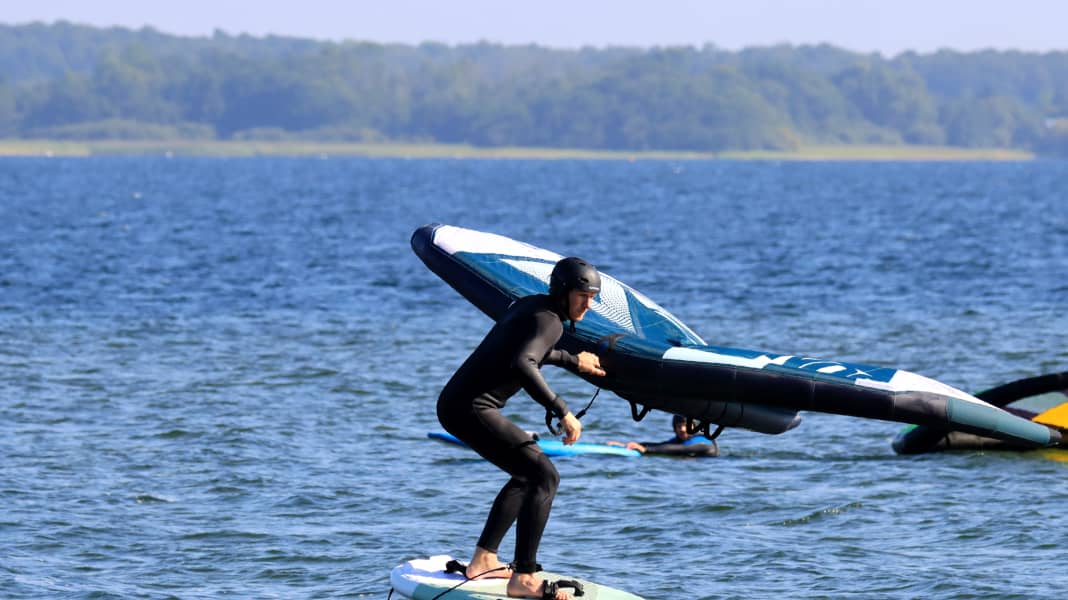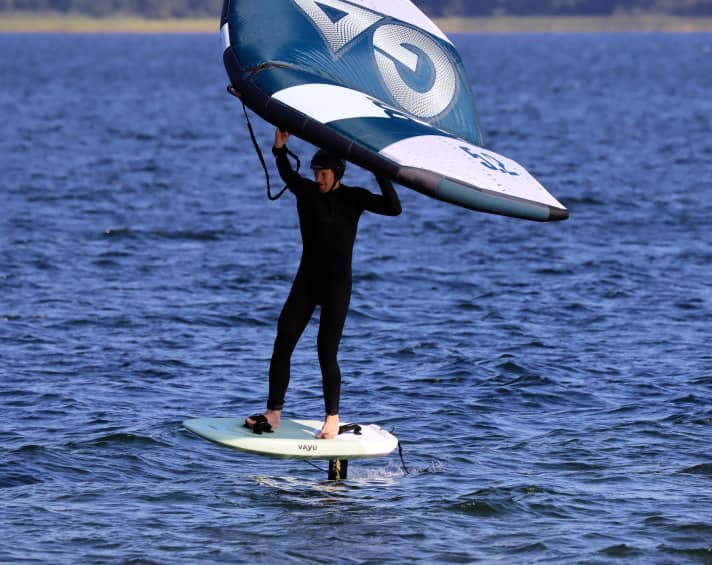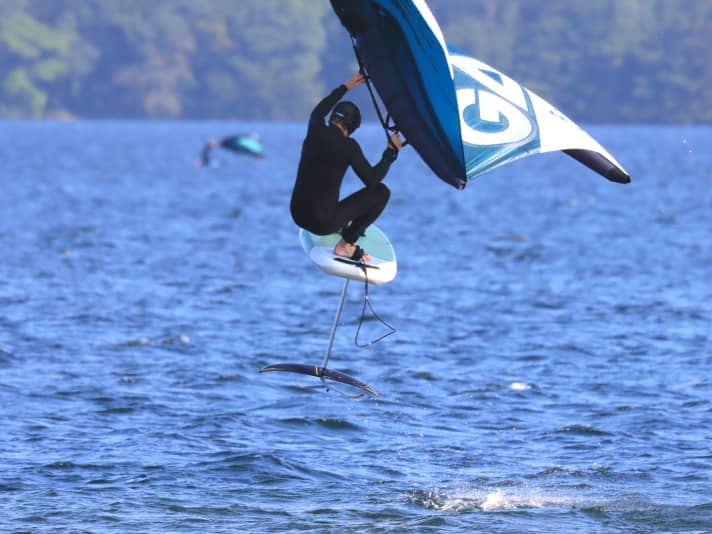
The Vayu Fly Wingboard on land:
At 1199 euros, the Fly is one of the cheaper models on the market, but with a measured weight of 7.52 kilos, it is still within the normal range. Compared to the second model in the Vayu range, the FlyR, the Fly with its wider front and rear sections is designed more for beginners and intermediates. Nevertheless, the size we tested is very compact for a wingboard of this volume at 90 litres with a length of 5'0'' (152 centimetres). The built-in double rail is slightly shorter than on some other boards on the market, but we were still able to fit different foils in the test. The underwater hull is rounded at the stern and turns into a "pump tail". The edges have been bevelled to gently send the wingboard back up again if it is unintentionally set down. No straps are included in the scope of delivery.
As always, we present our test boards in detail on our YouTube channel. Click your way in and subscribe to our channel.
This is how the Vayu Fly rides on the water:
The Vayu Fly 90 reminded us a little of the Naish Hover because it also belongs to the type of board that, compared to other 90-litre models, appears somewhat smaller. Although the Fly is stable in the water around the longitudinal axis, the reduced overall length and the fact that the bow is slightly narrower than with other concepts means that the board should be loaded sensitively around the transverse axis.

When starting off, the shape shows two faces: if you stand passively on deck and try to get up to speed without pumping the wing or pumping the foil, you will feel slightly higher resistance and delayed acceleration. However, this shortcoming can be largely compensated for if you actively pump - as is natural for advanced wingsurfers. Pumping over the foil works particularly well and you can noticeably push the lower wind limit for take-off. Once in the air, the Vayu Fly can really show off its strengths: It looks small and compact and is therefore easy to control - regardless of whether you are cruising through jibes and other manoeuvres or rotating through 360s.

Conclusion:
The Vayu Fly impresses as a very compact and agile wingboard for freeriding, freestyle and waves alike. Wingsurf beginners might find the shape a little too much effort when starting off and getting going - if in doubt, it's better to choose a board one size bigger. However, once you've got the pumping technique down, you can fully utilise the strengths of the Vayu Fly.
Compact in the air
Passive start-up
No loops included in the scope of delivery
